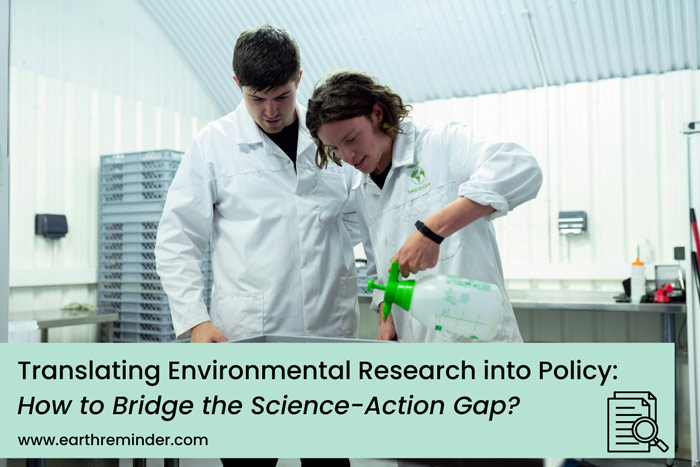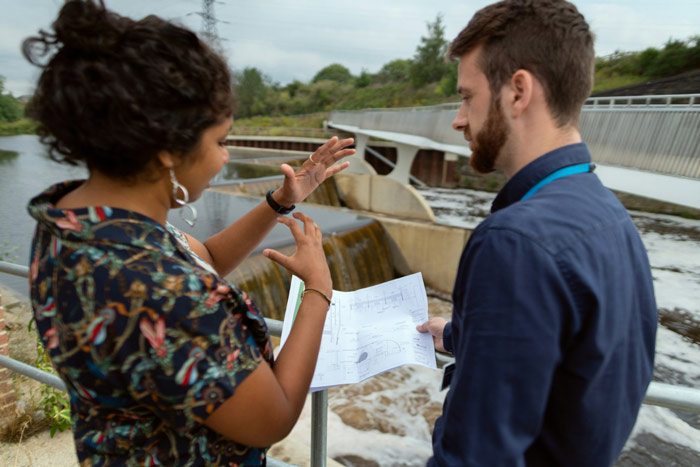Translating Environmental Research Into Policy: Bridging the Science-Action Gap
Diving into the heart of environmental challenges requires not just understanding the science behind them but also transforming that knowledge into action. This journey from research labs to legislative halls is crucial but complex.
But how could we bridge this science-action gap? Imagine scientists and policymakers working hand-in-hand, using groundbreaking research to craft policies that address pressing environmental issues. Whether you’re a budding scientist, an aspiring policymaker, or simply someone who cares deeply about our planet, understanding how to translate environmental research into action is crucial. Let’s explore how we can close this gap, turning knowledge into power for a sustainable future.
Table of Contents
The Crucial Role of Communication
Understanding the science behind environmental issues is one thing; communicating it effectively to policymakers and the public is another. Scientists often speak a different language than lawmakers. By simplifying complex data into understandable insights, we can bridge the knowledge gap. It’s not about dumbing down the science but about turning it into actionable insights.
For example, when researchers discovered the detrimental effects of certain chemicals on bee populations, they didn’t just publish their findings in scientific journals. They collaborated with communicators to highlight the implications for food security and biodiversity, catching the attention of policymakers worldwide. This strategic communication led to bans and regulations on those chemicals, showcasing the power of well-articulated research.
Policy-Focused Research
For environmental research to influence policy effectively, it must be designed with policy implications in mind. Scientists are increasingly recognizing the importance of framing their research questions in ways that address specific policy needs. If you’re a student interested in environmental research, you can pay for essay website and connect with professional writers to articulate your findings more effectively. This shift towards policy-focused research ensures that studies provide actionable insights that can directly inform decision-making.
Take, for example, renewable energy research. By focusing on the economic benefits and feasibility of solar and wind energy, researchers have provided policymakers with the data needed to support investments in renewables. This targeted approach has been instrumental in the development of policies promoting green energy.
Engaging the Community
Involving the community in environmental science is a powerful tool for fostering change. Scientists and activists can inspire action and support for policy changes. Here’s how community engagement can look:
- Workshops that teach local communities about environmental research;
- Citizen science projects that involve the public in data collection and analysis;
- Public forums where researchers and residents discuss local environmental issues;
- School programs that introduce students to environmental science and policy;
- Social media campaigns that spread awareness and mobilize support for policy changes.
After introducing these initiatives, it becomes clear that when people feel connected to the science affecting their environment, they’re more likely to advocate for change. This engagement not only educates but also empowers communities to push for policies that reflect their needs.
Building Bridges with Policymakers
Direct interaction between scientists and policymakers is crucial for translating research into action. However, these interactions are often infrequent and marred by misunderstandings. Building stronger relationships between these groups can facilitate the flow of information and increase the likelihood of research being used in policy development.
Initiatives such as policy briefings, where scientists present their findings directly to lawmakers, and the inclusion of scientific advisors in legislative bodies are examples of how these bridges are being built. Through regular dialogue and collaboration, policymakers become more familiar with scientific processes and findings, while scientists gain a better understanding of policy needs and constraints.
The Power of Case Studies
Real-world examples of successful science-to-policy translation can serve as powerful tools for understanding and replicating success. Take a look at these examples showcasing effective science-action solutions:
- The Montreal Protocol on substances that deplete the ozone layer, driven by scientific research on CFCs.
- The Clean Air Act amendments influenced by studies on air pollution and public health.
- Policies promoting urban green spaces, backed by research on their benefits for mental health.
- Single-use plastic bans inspired by marine biology studies on plastic pollution.
- The transition to sustainable agriculture practices, supported by soil science and biodiversity research.
Reflecting on these examples, it’s evident that when environmental research is effectively communicated and applied to real-world contexts, significant policy advancements are possible. These case studies provide a roadmap for future policy change efforts.
The Role of Technology in Closing the Gap
Advancements in technology offer new opportunities for closing the science-action gap. Digital platforms can facilitate the dissemination of research findings, while data analytics tools can help policymakers understand and visualize the implications of scientific data. Additionally, social media provides a powerful channel for engaging the public and building support for policy initiatives.
Innovations such as environmental monitoring apps and online citizen science projects also play a role in democratizing science, making it more accessible to non-scientists. As technology continues to evolve, it holds the potential to further streamline the translation of environmental research into meaningful policy actions, making the journey from knowledge to action quicker and more efficient.
Educating Future Leaders
Equipping the next generation of scientists and policymakers with the skills to navigate the science-policy interface is essential for sustainable future progress. This education goes beyond traditional environmental science courses, incorporating lessons on communication, the best graduate paper writing services in the USA, policy-making processes, and stakeholder engagement.
Programs that offer internships or collaborations with government agencies, NGOs, and community groups give students firsthand experience in applying scientific research to policy development. By fostering an early understanding of the complexities and challenges of this interface, these educational experiences prepare students to become effective change agents.
Final Thoughts
Bridging the science-action gap in environmental policy is more than just a goal; it’s a necessity for the well-being of our planet and future generations. Through effective communication, community engagement, and policy-focused research, we can turn scientific discoveries into actionable solutions. Your passion, curiosity, and willingness to engage can drive the change we need, turning research into policies that protect and preserve our world for years to come.

